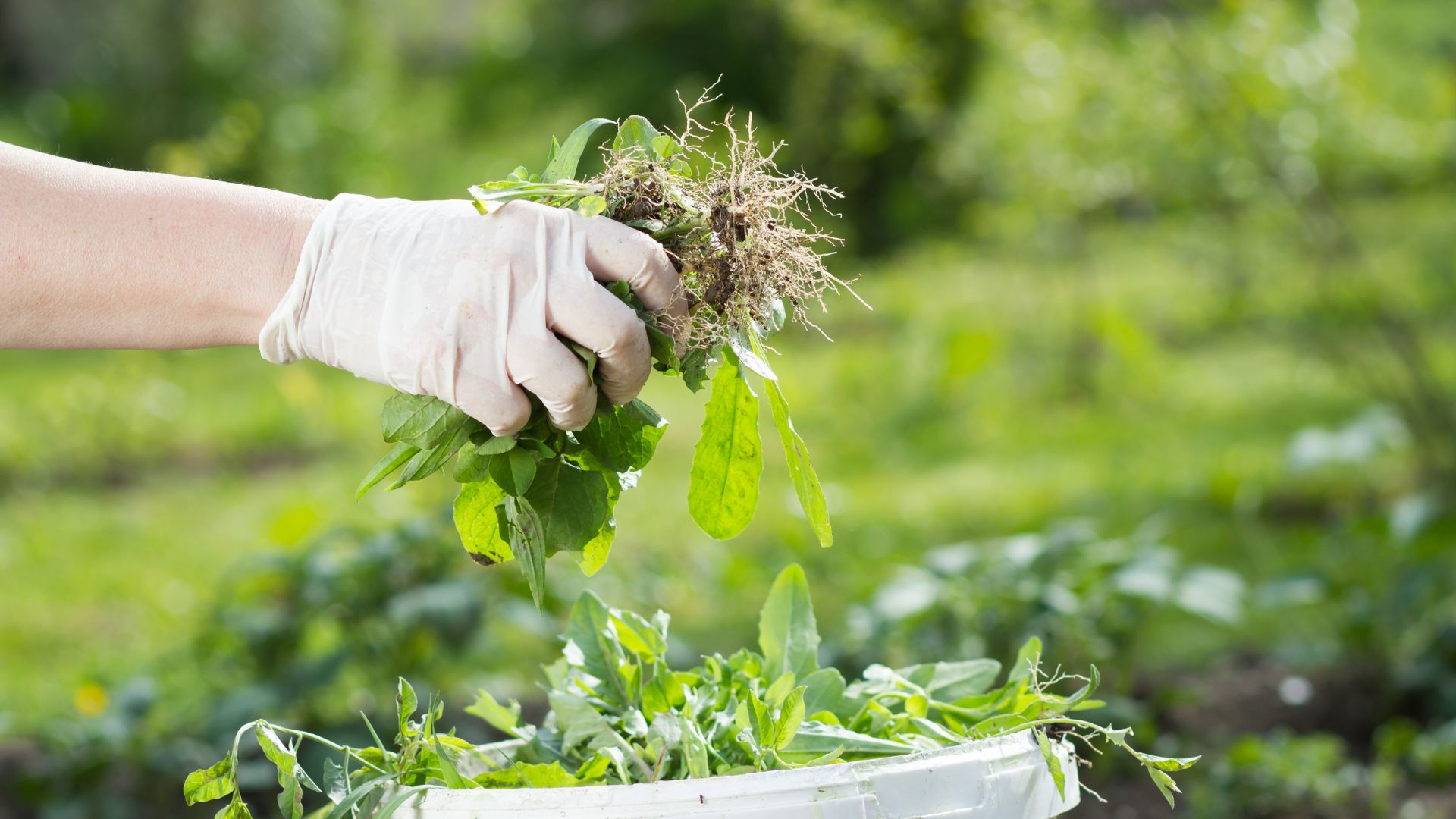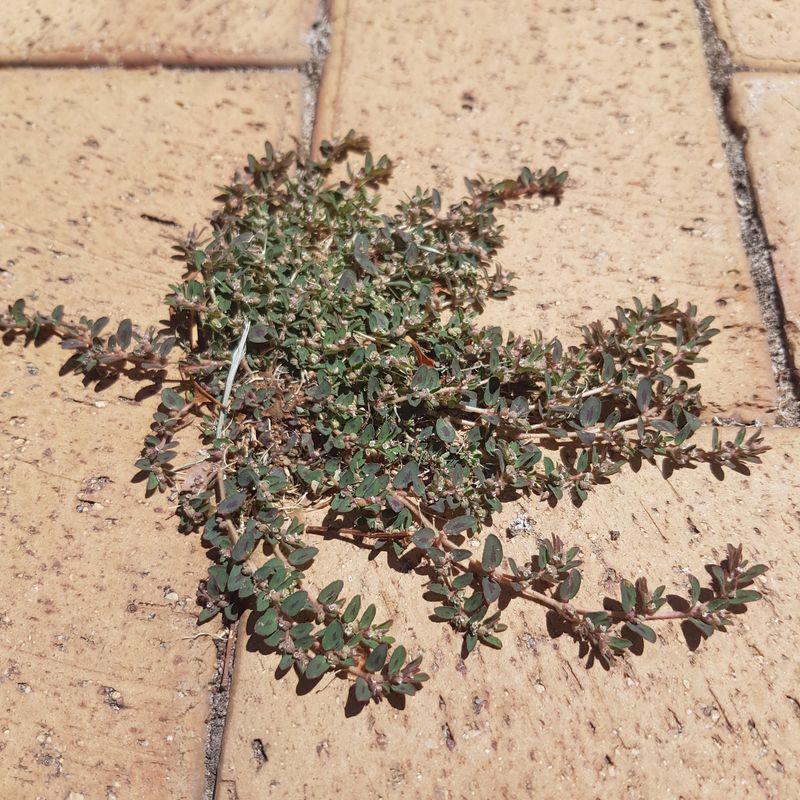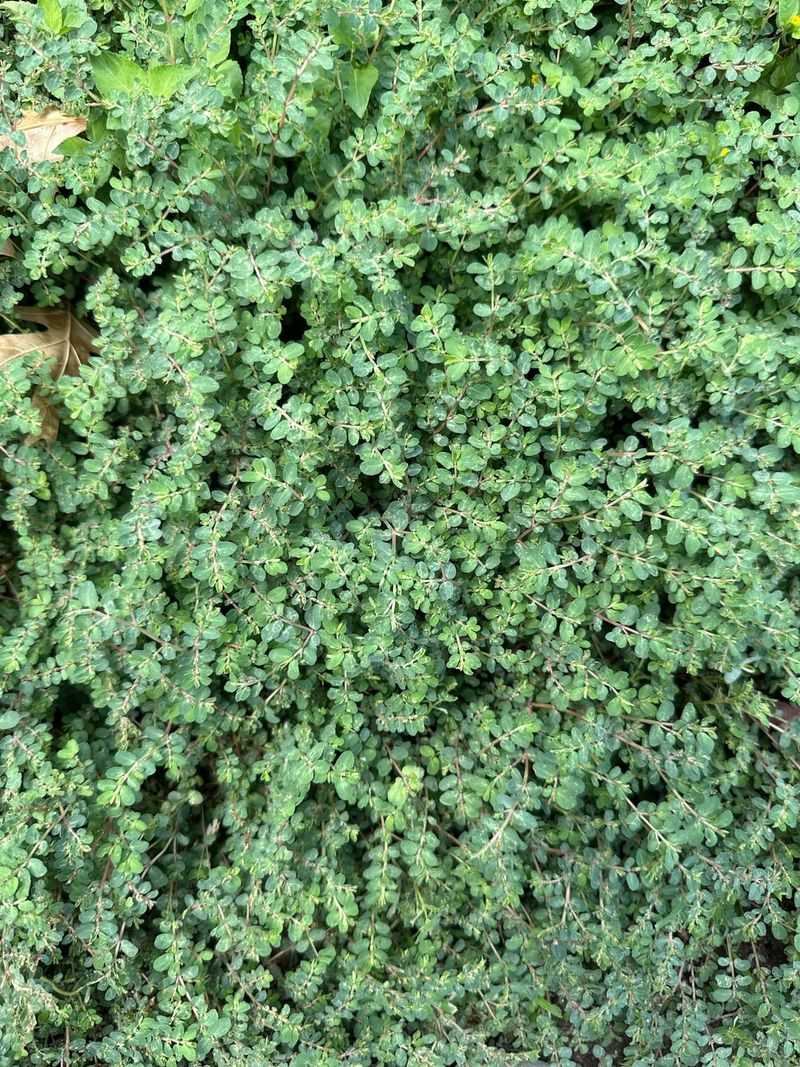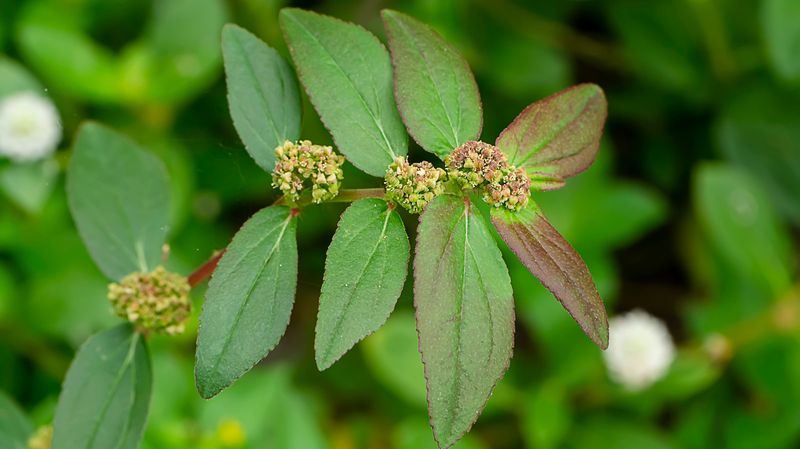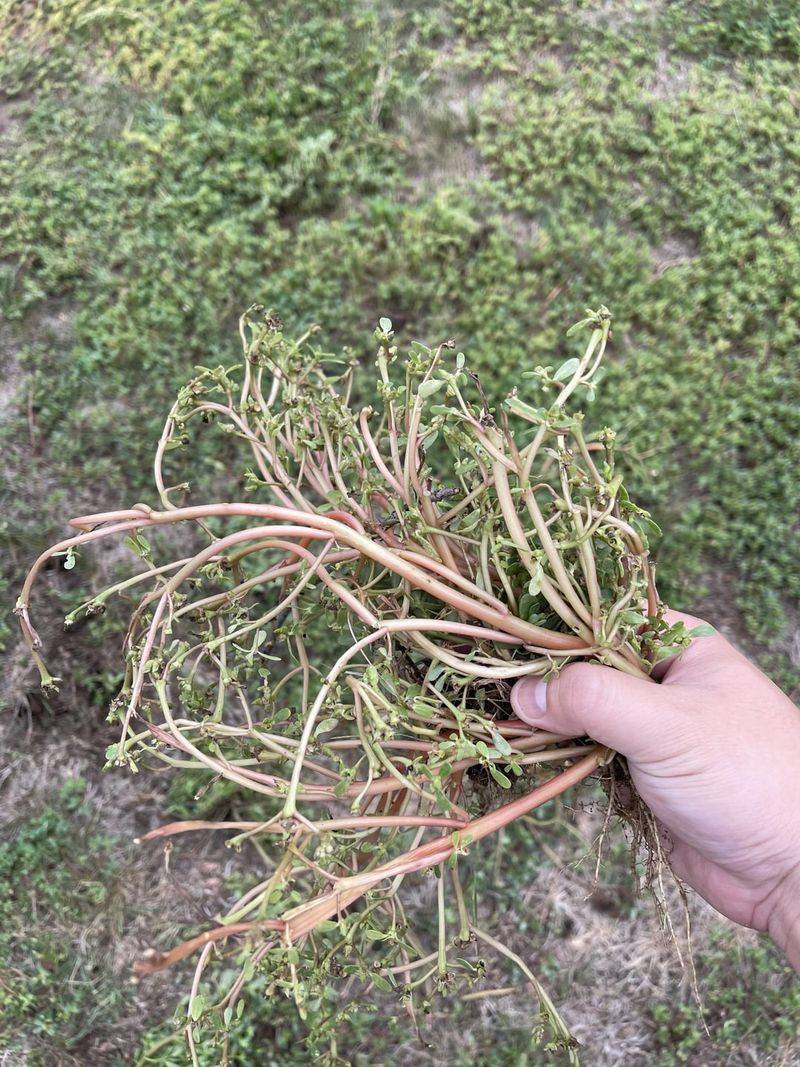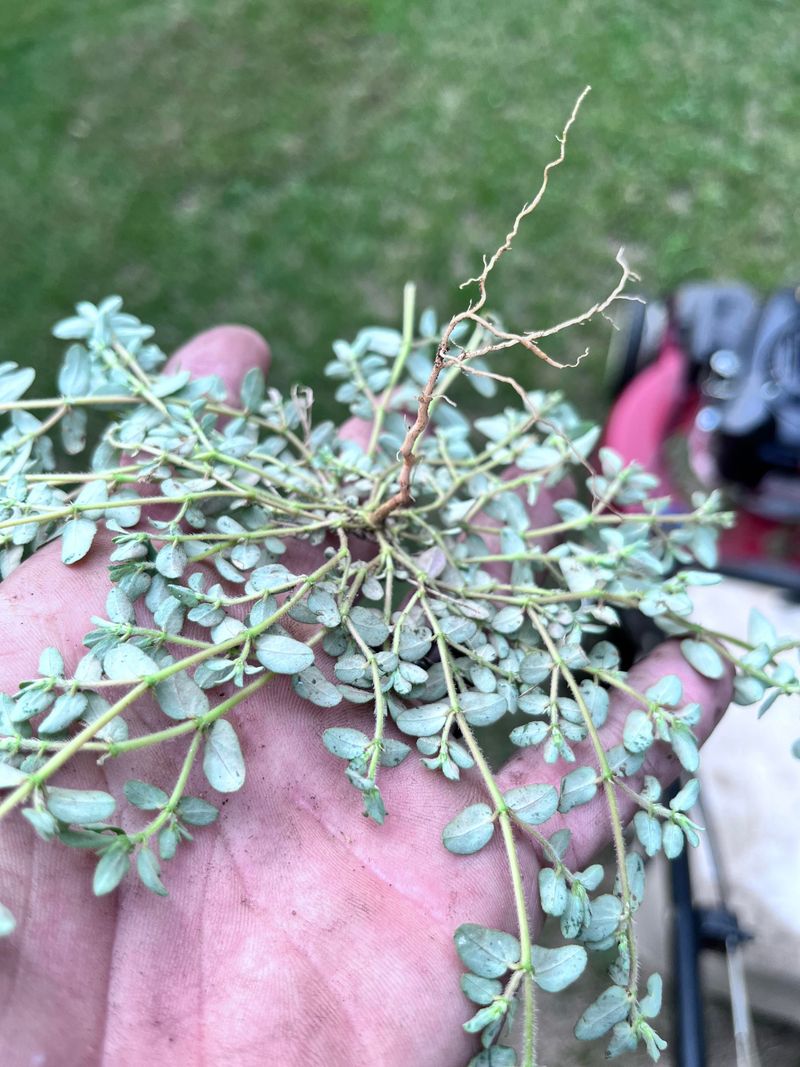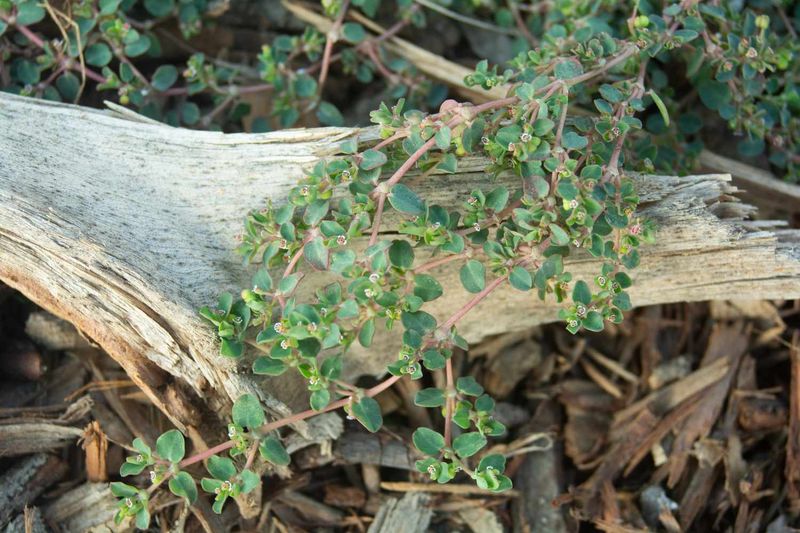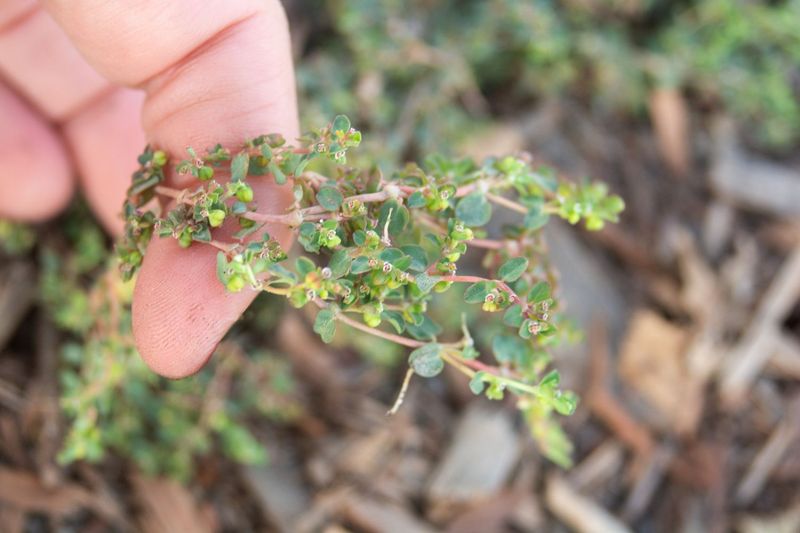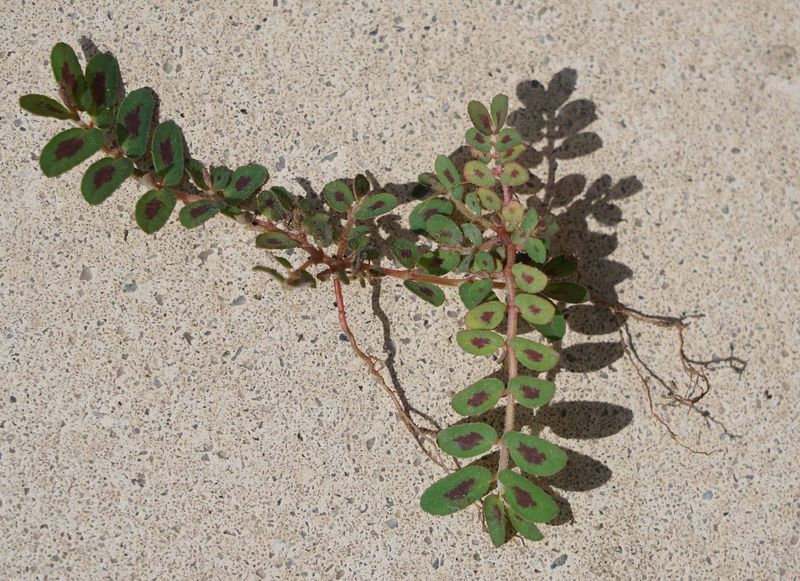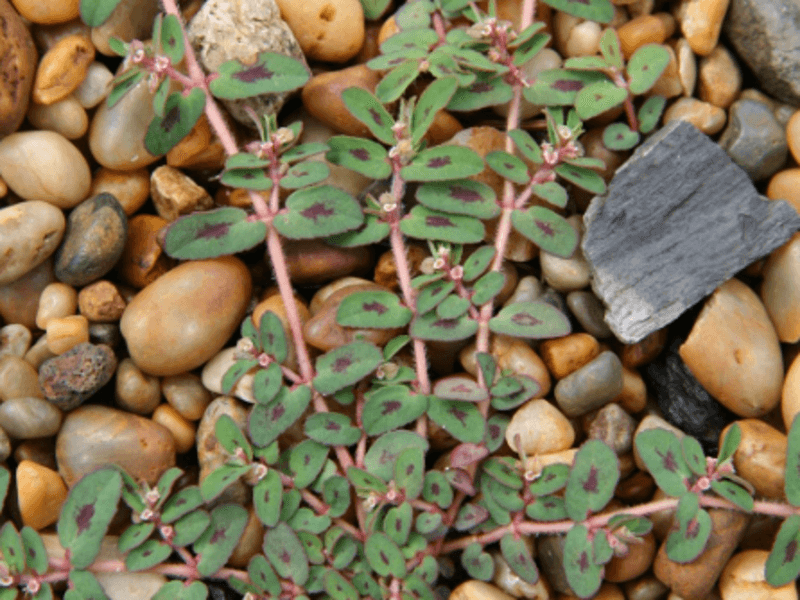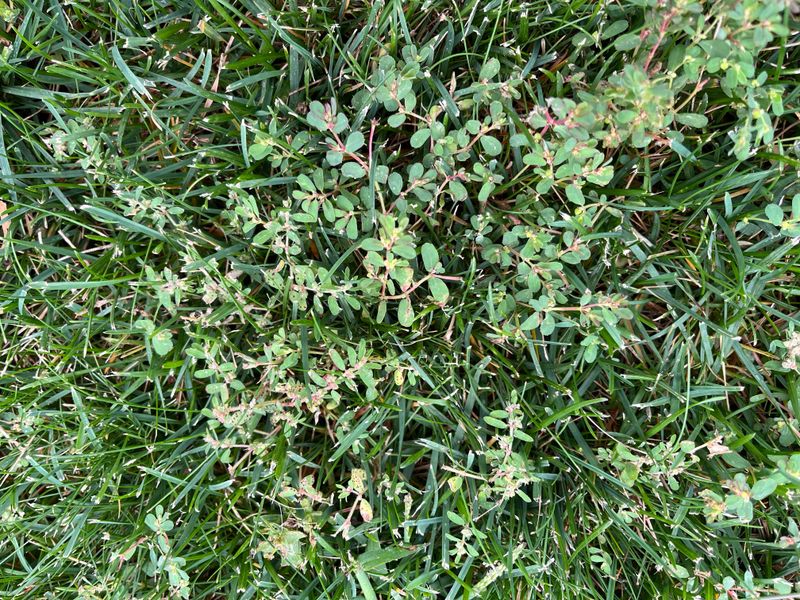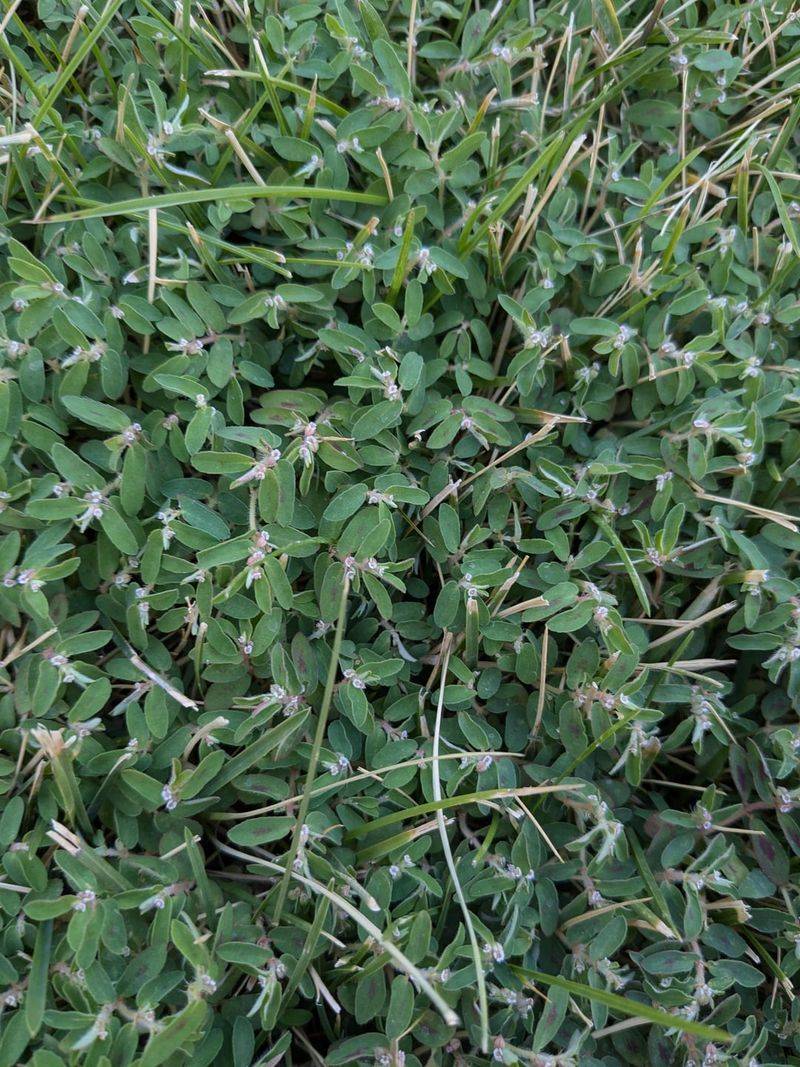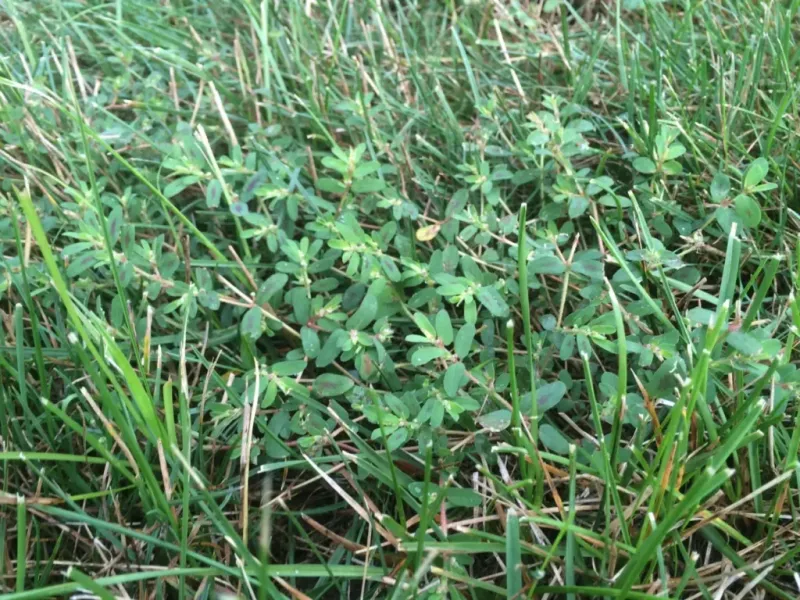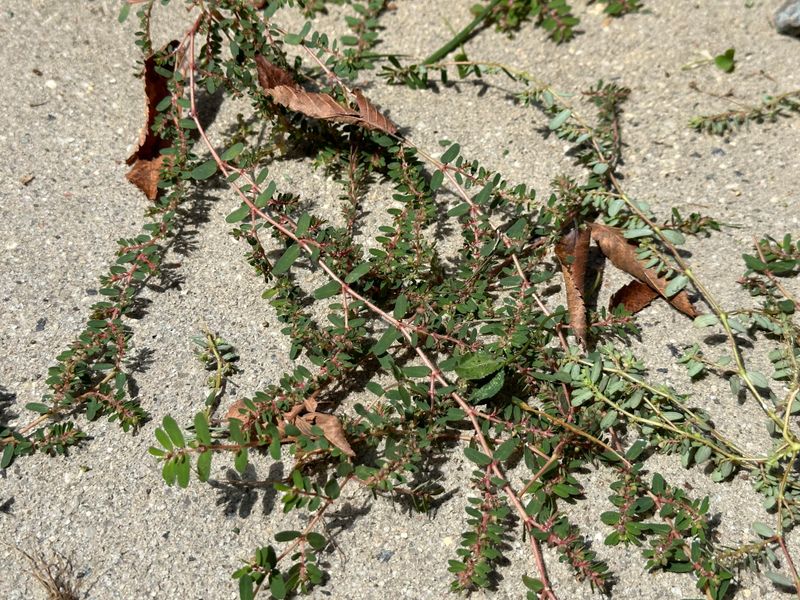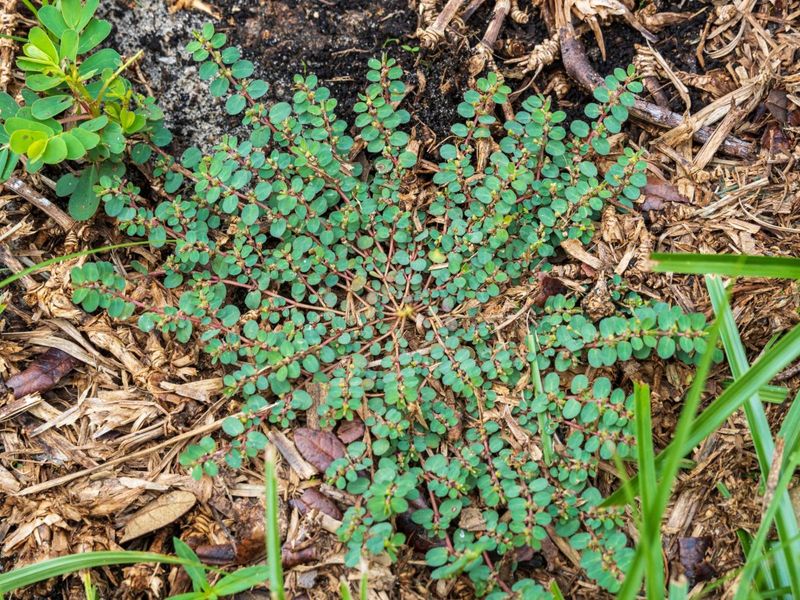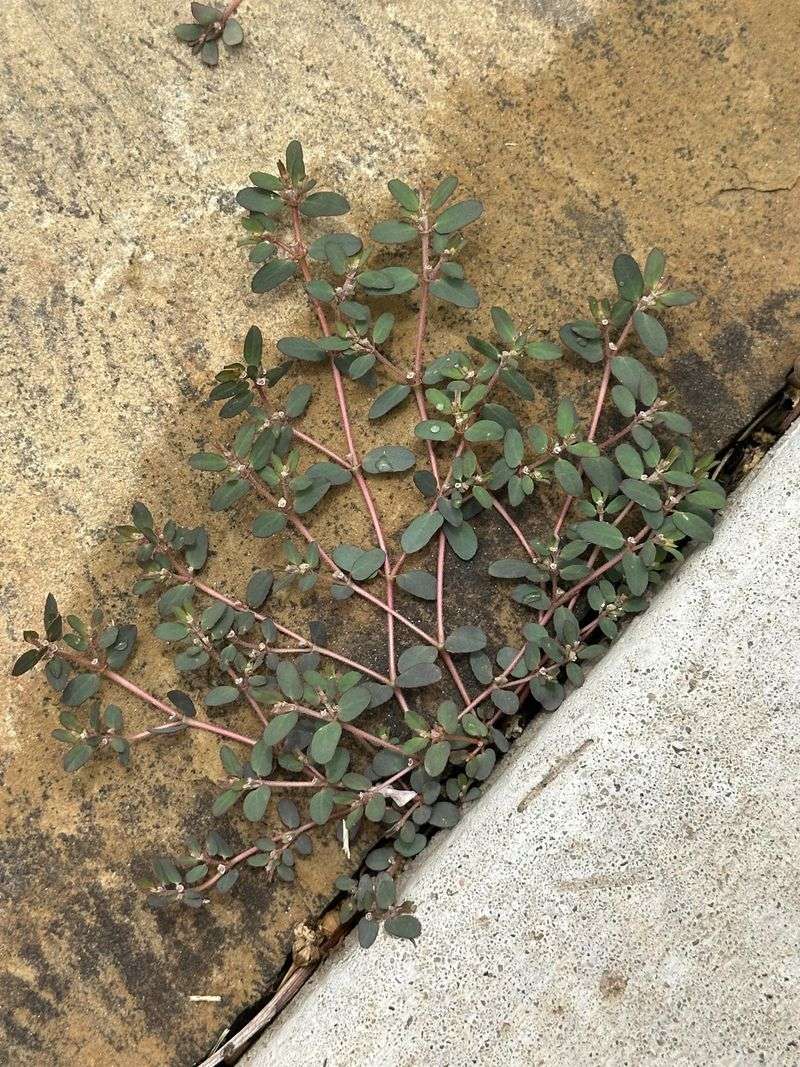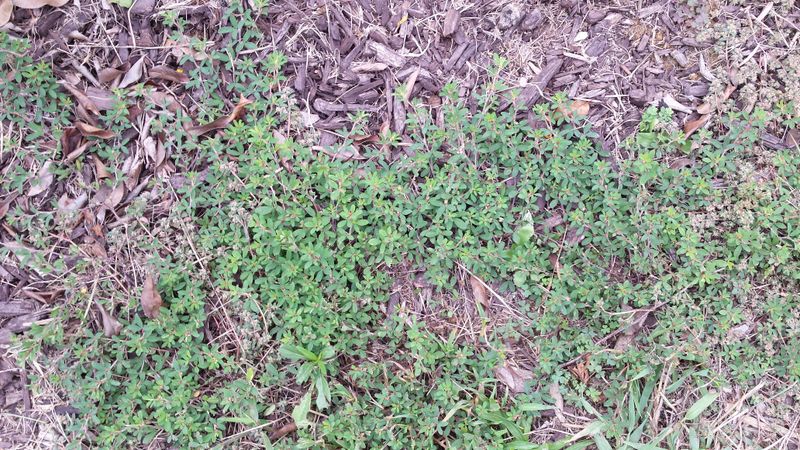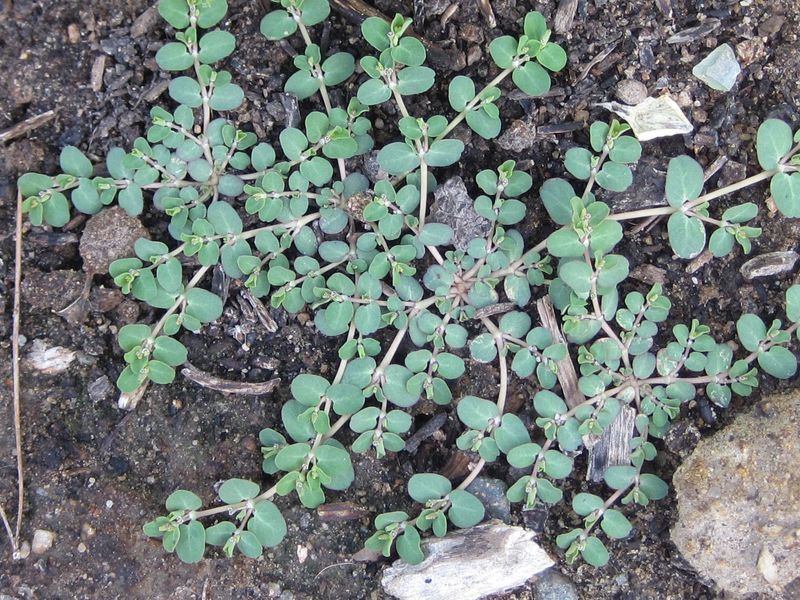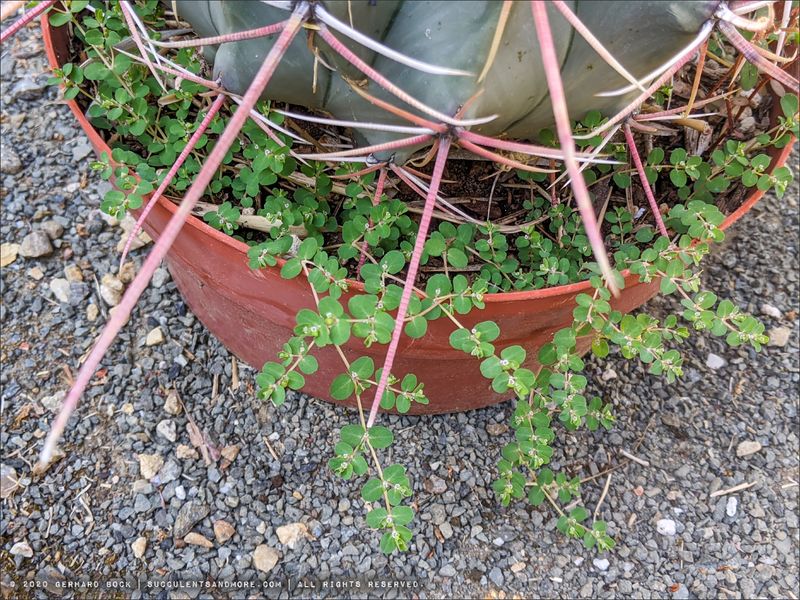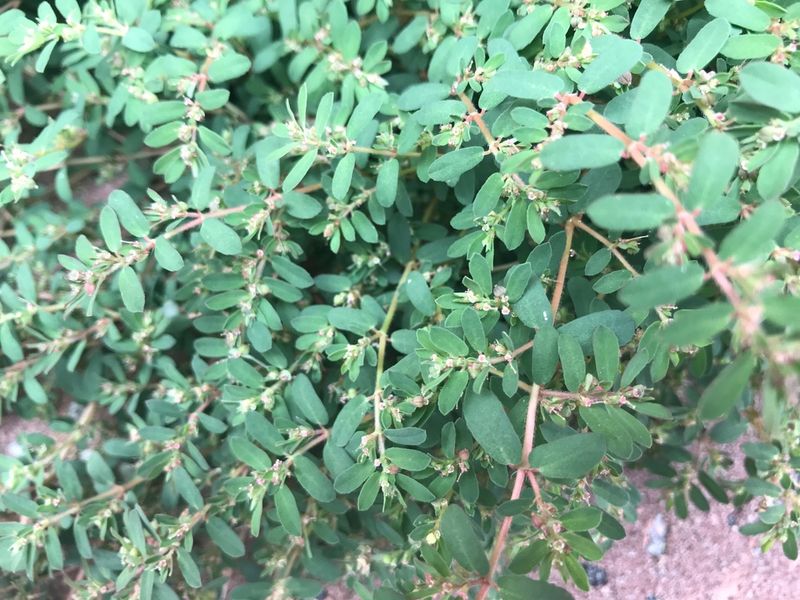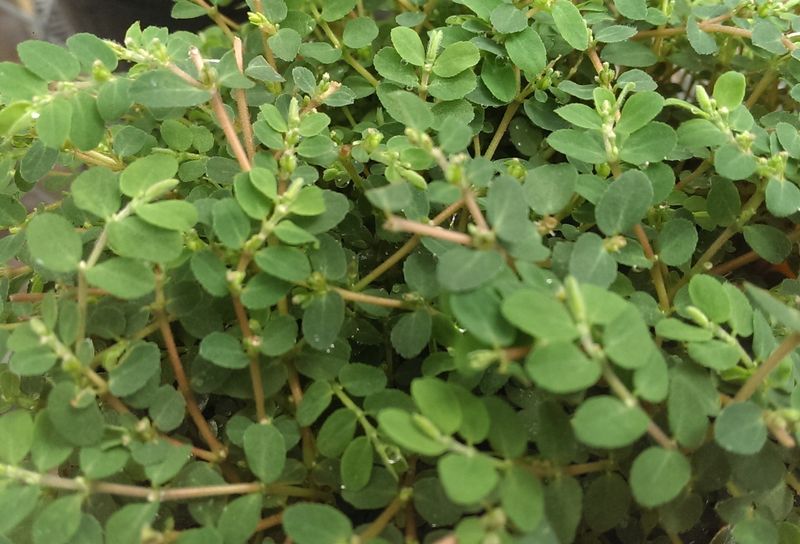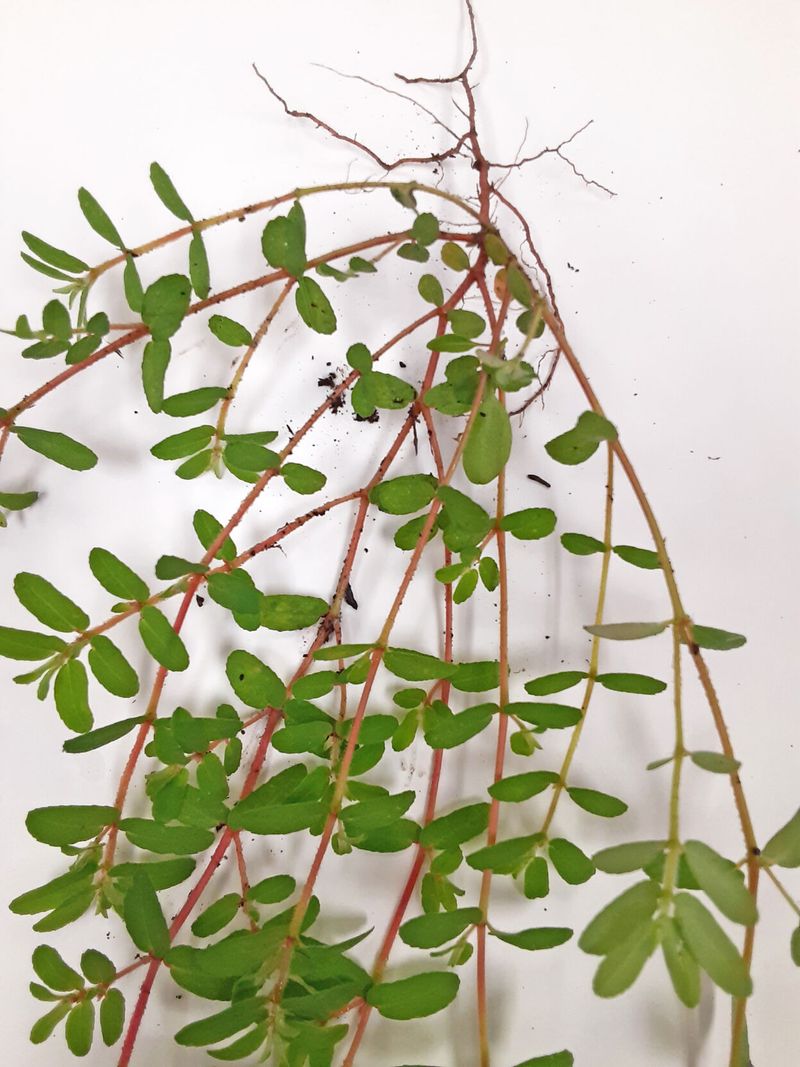Dealing with spurge weeds can be so frustrating. I’ve definitely had my fair share of battles with them. At first, it feels like you’ve got it under control, but then they pop up again, like they’re mocking you.
Whether you’re a seasoned gardener or just starting out, I’ve learned that avoiding a few common mistakes can really make a difference in getting rid of spurge for good.
I’ve made the mistakes myself, so I’m here to share what’s actually worked for me. Let’s work together to tackle those spurge weeds and finally take back our gardens!
1. Ignoring Early Growth Stages
Have you ever walked past a tiny plant and thought, “That little thing can’t possibly cause trouble”? Well, think again! Ignoring the early stages of spurge can lead to a garden takeover.
Tiny seedlings are easier to manage before they become a full-blown forest of trouble. By acting swiftly, you prevent future headaches. Regularly check your garden beds and lawn for those first signs.
With a watchful eye, you can nip the problem in the bud. You’ll thank yourself later when your garden is spurge-free and thriving without these sneaky invaders.
2. Not Identifying The Right Spurge Species
Ever felt like you’re playing a guessing game with spurge weeds? I know I have! Identifying the correct spurge species is crucial because treatment varies. Some types may require different methods or herbicides.
Misidentifying can lead to wasted time and effort. So, take a moment to study those leaves. Look for unique features like leaf shape and arrangement. It’s like being a detective in your own garden.
Once you get it right, your battle with spurge will be much easier, and you’ll feel like you’ve cracked a secret code every time you spot them.
3. Allowing Weeds To Flower And Seed
Letting spurge weeds bloom and set seed is like inviting them to multiply. Once those flowers appear, seeds aren’t far behind. And with seeds comes the potential for a spurge invasion.
It’s essential to catch them before they reach this stage. You’ll find yourself in a never-ending loop of pulling weeds if you don’t. Snip those buds as soon as you see them, and you’ll be a step ahead.
By preventing this cycle, you’ll save yourself time and energy. It’s a proactive approach that pays off in the long run.
4. Pulling Weeds Without Removing The Root
It’s easy to think pulling the top of the weed is enough, but spurge roots run deep. Leaving the root means you’re inviting the weed back for another round. It’s like a bad penny that keeps turning up.
When pulling, make sure to get your tools into the soil and extract the root system entirely. You might need a trowel or a specific weeder tool.
It’s a bit more effort, but thoroughly removing spurge ensures they won’t reappear. This method helps maintain a clean garden, free from these persistent invaders.
5. Failing To Wear Gloves (Spurge Sap Can Irritate Skin)
Do you enjoy itchy, irritated skin? I didn’t think so! Handling spurge without gloves can lead to skin irritation due to its sticky sap. Gloves act as your first defense against this pesky plant.
They protect your hands while you do the dirty work. So, always remember to glove up before tackling spurge. Your skin will appreciate the barrier, and you’ll avoid unnecessary discomfort.
By making gloves a part of your gardening routine, you can focus on the task without distractions. It’s a small step that makes a big difference in your spurge-fighting arsenal.
6. Using Dull Or Ineffective Weeding Tools
Ever tried cutting a steak with a butter knife? Then you know the struggle of using dull tools on weeds. Ineffective tools can make the task tedious and frustrating.
Sharp, well-maintained weeding tools are your garden best friends. They make removing spurge easier and more efficient. Check your tools regularly and sharpen or replace them as needed.
The right tool can transform your weed-pulling experience from daunting to doable. Investing time in tool care means saving time in the garden. It’s a win-win situation for both you and your garden.
7. Not Disposing Of Pulled Weeds Properly
Have you ever tossed pulled weeds aside, thinking the job was done? I used to make that mistake! Simply leaving them on the soil can lead to regrowth or seed dispersal.
Proper disposal is key to ensuring they don’t come back. Put those pulled spurge weeds in a compost bin or a waste bag immediately. This step helps prevent seeds from spreading.
By keeping your garden tidy, you reduce the chances of seeing those weeds again. It’s about being thorough and completing the task fully. Your garden’s cleanliness will reflect your meticulous efforts.
8. Leaving Soil Disturbed Without Mulch Cover
After pulling spurge, you might notice disturbed soil. Leaving it bare is like rolling out a welcome mat for new weeds. Mulch acts as a protective layer, suppressing weed growth and conserving moisture.
Once you’ve cleared the spurge, cover the area with mulch. It’s like putting a lid on potential problems. This simple layer helps keep your garden looking pristine and prevents new spurge from taking over.
It’s a small effort with significant rewards. By incorporating mulch into your routine, you’ll enjoy a healthier, weed-free garden.
9. Using Weak Or Ineffective Herbicides
Ever felt like you’re in a constant battle with spurge? The wrong herbicide might be why. Weak or ineffective herbicides can waste your time and effort. Choose products specifically designed for spurge control.
Check labels and active ingredients to ensure you’re using the right solution. Stronger formulations mean fewer applications and better results. You’ll spend less time spraying and more time enjoying your garden.
By picking effective herbicides, you take control of the situation. It’s about working smarter, not harder, and seeing your efforts pay off.
10. Overwatering, Which Encourages Growth
Have you ever loved your plants so much you drowned them? Overwatering not only harms your plants but also encourages spurge. Moisture is like a growth booster for these weeds.
Keep a balanced watering schedule to avoid turning your garden into a spurge haven. It’s about finding that sweet spot where plants thrive, but weeds don’t. Adjust your watering habits and monitor moisture levels.
By doing so, you maintain a healthy garden and keep spurge at bay. It’s a matter of moderation and mindfulness in your gardening routine.
11. Skipping Regular Garden Inspections
Skipping inspections is like closing your eyes to potential problems. Regular garden checks can make all the difference in managing spurge. By inspecting frequently, you catch issues before they escalate.
This proactive approach helps maintain control. Set a schedule for inspections and stick to it. You’ll become more attuned to changes in your garden. Noticing spurge early means less effort later on.
It’s about staying one step ahead and keeping your garden in the best shape possible. Consistency is key in the fight against these persistent weeds.
12. Ignoring Spurge In Lawn Areas
Have you ever focused so much on your garden beds you forgot the lawn? I’ve been there! Spurge doesn’t discriminate—it loves lawns, too. Ignoring it in grassy areas gives it a chance to spread unchecked.
Regular mowing and targeted treatments help keep your lawn spurge-free. Look for spurge-resistant grasses or consider overseeding to crowd out weeds.
By paying attention to your entire yard, you maintain a consistent, weed-free appearance. It’s about seeing the bigger picture and not letting spurge slip through unnoticed.
13. Mowing Too Short, Allowing Spurge To Thrive
Ever given your lawn a buzz cut and wondered why weeds thrive? Mowing too short weakens grass, giving spurge room to grow. Keeping grass at optimal height helps shade out spurge and promotes healthy growth.
Adjust your mower settings to maintain a taller lawn. This simple change can make a significant difference in weed control. By letting grass do the work, you have less to worry about.
It’s a natural way to suppress spurge without extra effort. Your lawn stays healthy, free from unwanted guests.
14. Not Improving Soil Health To Deter Growth
Sometimes the best defense is a strong foundation. Healthy soil discourages spurge by supporting robust plant growth. Test your soil and amend it as necessary with compost or other organic matter.
Encouraging beneficial organisms like earthworms improves soil structure. Healthier plants outcompete spurge naturally. By focusing on soil health, you foster an environment that resists weeds.
It’s a long-term strategy that pays off by making your garden less inviting to spurge. Investing in soil health means investing in your garden’s future, ensuring a weed-free landscape.
15. Allowing Seedlings To Spread Before Treatment
Have you ever found yourself overwhelmed by weeds seemingly overnight? Allowing spurge seedlings to spread before acting can lead to more extensive problems.
Catching them early prevents a bigger battle later. Keep an eye out for new growth and act promptly. Quick action makes treatment easier and more effective. By staying vigilant, you prevent spurge from gaining a foothold.
It’s about being proactive and not letting weeds run rampant. Early intervention saves time and effort, leading to a more manageable and spurge-free garden.
16. Using Non-Selective Herbicides That Harm Other Plants
Have you ever sprayed weeds only to find your favorite plants wilting? Using non-selective herbicides can harm more than just spurge. These products affect all plants indiscriminately. Choose selective herbicides when treating spurge to avoid collateral damage. Read labels carefully and follow instructions. This choice protects your garden’s diversity while tackling the weed problem. By being selective, you maintain a healthy landscape. It’s about precision and care, ensuring your garden remains a sanctuary for your beloved plants while keeping spurge at bay.
17. Applying Herbicides At The Wrong Time Of Day
Have you ever wondered why your herbicide doesn’t seem to work? Timing can be a major factor. Applying herbicides during the heat of the day can reduce their effectiveness.
Instead, choose early morning or late evening when temperatures are cooler. This timing allows the product to work more efficiently without evaporating too quickly. By adjusting your application schedule, you’ll see better results.
It’s a simple change that can significantly impact your success in controlling spurge. Planning your strategy around optimal times ensures your efforts are rewarded.
18. Failing To Control Spurge Along Walkways And Borders
Have you ever focused on the center of your garden and ignored the edges? Failing to address spurge along walkways and borders can lead to a spread into other areas.
These spots are prime locations for weeds to thrive. Regular maintenance and targeted treatments help control spurge in these often-overlooked areas. Keep your garden’s periphery as tidy as the center.
It’s about comprehensive care and attention to detail. By extending your efforts to all garden areas, you ensure a consistent, spurge-free environment that’s pleasing from every angle.
19. Not Checking For Regrowth After Treatment
Have you ever finished a task only to find it undone later? Not checking for spurge regrowth can lead to a recurrence. After treatment, inspect areas regularly to catch any returning weeds.
It’s a necessary follow-up to ensure success. By addressing regrowth promptly, you prevent the weed from taking hold again. This vigilance makes all your hard work worthwhile.
Consistent checks and actions ensure a lasting impact. It’s about completing the cycle and confirming that your garden remains free of spurge without having to start over.
20. Overusing Chemicals Without Spot Treatment
Have you ever felt like you’re waging war on weeds with chemicals? Overusing them can be counterproductive and harmful to the environment. Focus on spot treatment for targeted control.
This method reduces chemical usage while effectively managing spurge. It’s about precision and responsibility. By applying herbicides only where needed, you minimize impact and maximize results.
Your garden stays healthy, and you contribute to a more sustainable environment. It’s a thoughtful approach that balances effectiveness with care, ensuring your garden thrives without the overuse of chemicals.
21. Ignoring Spurge In Potted Plants And Containers
Have you ever admired your beautiful pots only to find spurge lurking inside? Ignoring weeds in containers allows them to spread unnoticed. Regular checks and maintenance keep potted plants pristine.
Remove spurge as soon as you spot it to prevent further issues. It’s about keeping every part of your garden in check. Containers may be small, but they’re not exempt from weed control.
By including them in your routine, you maintain their beauty and health. It’s a small effort that makes a big difference in your overall garden care.
22. Not Using Pre-Emergent Herbicides In Spring
Have you ever thought about prevention over reaction when it comes to weeds? Pre-emergent herbicides in spring stop spurge before it starts. Applying them early keeps your garden weed-free for the growing season.
It’s about planning ahead and thinking strategically. This approach reduces the need for later interventions. By setting the stage early, you enjoy a smoother gardening experience.
It’s a proactive method that saves time and effort as the season progresses. With pre-emergents, you lay the groundwork for a successful, spurge-free garden.
23. Underestimating How Fast Spurge Spreads
Ever blinked and found your garden overrun with weeds? Underestimating spurge’s growth rate can lead to a rapid takeover. These weeds spread quickly, and vigilance is key to keeping them in check.
Regular monitoring helps catch new growth before it becomes unmanageable. By staying aware of spurge’s potential to spread, you prepare yourself for timely action.
It’s about being proactive and not letting these fast-growing weeds catch you off guard. Monitoring and quick responses are essential to maintaining control over your garden.
24. Giving Up Too Soon Before The Problem Is Solved
Have you ever thrown in the towel a little too soon? Tackling spurge requires persistence and patience. It’s easy to feel discouraged but giving up means letting the weeds win. Stick with your strategy and keep at it.
Consistent effort eventually pays off. By maintaining determination, you’ll see improvements in your garden. It’s about resilience and not letting setbacks deter you.
With perseverance, you’ll achieve a spurge-free space that reflects your hard work. Don’t let temporary frustration overshadow your long-term goals. Victory is within reach if you keep pushing forward.

